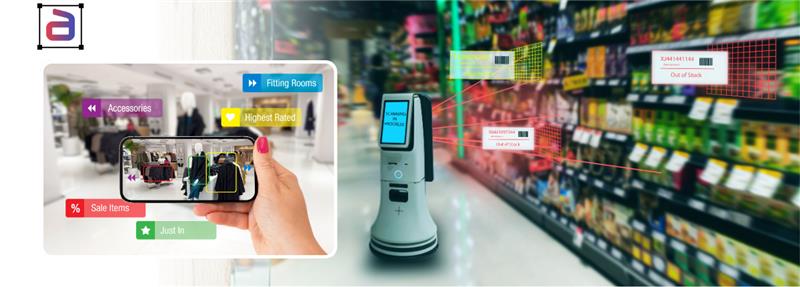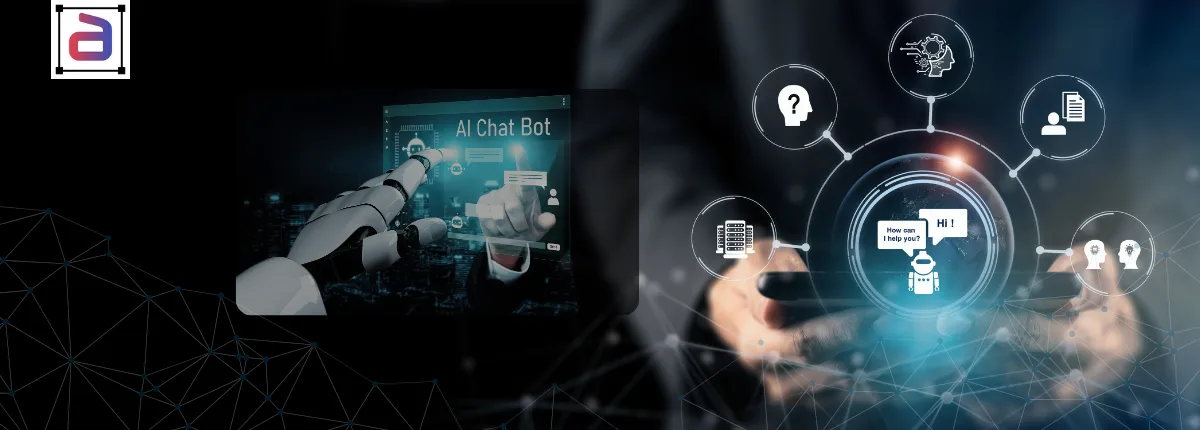The age of intelligent machines is here. From robotic arms on factory floors to autonomous drones inspecting pipelines, robots are becoming essential to manufacturing, logistics, and industrial operations. But while their hardware looks impressive, what truly powers these machines isn’t gears or circuits—it’s data. Data Annotation for robotics is a key step for a wide range of applications.
More specifically, it’s data annotation that builds the “brains” of robots. Annotation turns raw streams from cameras, LiDAR, and sensors into structured datasets that teach robots how to perceive, navigate, and act in the real world. Without annotated data, robots remain blind machines. With it, they become intelligent collaborators capable of precision, safety, and adaptability.
According to McKinsey, robotics and industrial automation could add $1.2 trillion in productivity gains by 2030, but those gains hinge on data quality.
“Robots don’t learn from code alone—they learn from the data we feed them.” — AI in Robotics Analyst
Why Data Annotation Matters in Robotics
Robots interact with complex environments filled with moving parts, people, and unpredictable variables. Their sensors capture massive amounts of unstructured data—video, LiDAR scans, or machine logs—that are unintelligible without annotation.
- In a factory, annotation helps a robot distinguish between a wrench and a human hand.
- In a warehouse, annotation trains robots to identify packages, barcodes, and shelving layouts.
- In autonomous vehicles, annotations enable navigation systems to distinguish pedestrians from street signs.
Data annotation gives robots perception (the ability to see objects), context (understanding environments), and decision-making ability (choosing the right action).
Key Annotation Techniques for Robotics
Different robotics applications require specialized annotation methods:
- Bounding Boxes & Polygons: Detect tools, machinery, or packages. Essential for tasks like robotic vision in warehouses.
- Semantic Segmentation: Labels every pixel in an image, allowing robots to distinguish between walkways, machinery zones, or restricted areas.
- 3D Point Cloud Annotation: Used for LiDAR data to give robots depth perception and spatial orientation—crucial for drones or autonomous forklifts.
- Keypoint Annotation: Marks joints and components of robotic arms, ensuring precise alignment and motion. Also used to track human movements in collaborative robotics.
- Temporal Annotation: Labels sequences of actions (e.g., pick, place, screw) to train robots on workflows and assembly line processes.
Each technique is like a “lesson plan” for teaching robots how to operate safely and effectively.
Applications in Industrial Automation
- Manufacturing
Robots trained on annotated footage from an assembly line can detect defects, track components, and ensure consistent quality. Automotive manufacturers use this to reduce errors and increase throughput.
Mini Case Study: A German carmaker used an annotated video of its assembly lines to train robotic arms in defect detection. Result: defect rates fell by 18%, saving millions annually in warranty claims. - Warehousing & Logistics
Annotated package and barcode data enable robots to pick, sort, and deliver items with near-perfect accuracy. Amazon’s warehouses rely heavily on annotated datasets to power their logistics robots.
Mini Case Study: A global logistics company outsourced annotation for 50,000+ hours of warehouse footage. Picking accuracy of their robots improved by 23%, reducing delays and boosting customer satisfaction. - Collaborative Robots (Cobots)
Cobots must safely work alongside humans. An annotated video helps them recognize gestures, body language, and proximity, ensuring they don’t collide with workers while performing tasks.
Mini Case Study: An electronics manufacturer trained cobots using annotated worker gesture data. This improved cobot response time by 30%, reducing near-miss safety incidents on the factory floor. - Predictive Maintenance
Annotation of machine sensor data helps AI detect wear-and-tear patterns, allowing robots to predict breakdowns before they happen, saving downtime and repair costs.
Mini Case Study: An energy company used annotated vibration and thermal sensor data from turbines. The system predicted failures two weeks earlier than traditional methods, preventing costly outages. - Autonomous Inspection
Drones and mobile robots use annotated video to inspect infrastructure such as pipelines, wind turbines, or power grids. This reduces the need for risky human inspections.
Mini Case Study: A utility provider deployed drones trained on annotated footage to inspect power lines. Fault detection accuracy improved by 25%, cutting inspection time in half.
Challenges in Robotics Annotation
Robotics annotation is uniquely demanding because it deals with complex, high-stakes environments where precision directly affects safety and productivity. Some of the major challenges include:
- Multi-Sensor Complexity: Robotics involves not just video, but also LiDAR, infrared, depth sensors, and IoT data streams. Each modality captures the world differently, and combining them into a unified annotated dataset requires specialized knowledge. For example, synchronizing LiDAR point clouds with video feeds so a robot can perceive both distance and object identity is a non-trivial task.
- Industrial Environments: Factories and warehouses are rarely controlled settings. Fast-moving machinery, workers walking across paths, changing lighting conditions, and cluttered backgrounds make accurate annotation difficult. Annotators must be trained to identify and label critical details even in noisy or low-visibility conditions.
- 3D and Real-Time Requirements: Unlike static AI models, robots often need three-dimensional annotations and real-time decision-making to operate safely. Annotating 3D data requires mapping thousands of points per frame, while real-time demands mean errors can’t be tolerated—if a forklift robot misses an obstacle, accidents can occur.
- Consistency Across Teams: Large robotics projects often require teams of annotators working in parallel. Inconsistent labeling—for instance, one annotator marking a conveyor belt as machinery while another marks it as background—can confuse models and degrade performance. Rigorous annotation guidelines and gold-standard reference datasets are critical to maintain uniformity.
- Compliance and Safety: Annotation errors in robotics are not just technical glitches—they can endanger workers. Mislabeling a human worker as an object or failing to mark a hazard zone could result in collisions or accidents. This is why quality assurance and compliance with occupational safety standards must be central to any robotics annotation project.
“Annotation mistakes in robotics aren’t just technical errors—they can compromise worker safety.” — Industrial Automation Specialist
Human-in-the-Loop Advantage
AI can speed up annotation, but in robotics, human oversight is essential. Ambiguous cases—like differentiating a tool from scrap metal—require expert judgment. A Human-in-the-Loop (HITL) workflow combines automation with human review to ensure safety-critical accuracy.
This approach prevents mislabeling and ensures robots can handle unpredictable scenarios without putting operations or people at risk.
Industry Examples & Case Studies
- Amazon Warehouses: Robots trained on annotated video and sensor data now handle millions of package movements daily, reducing errors and speeding up delivery. Beyond logistics, annotated data also helps optimize traffic flow inside warehouses, ensuring robots avoid bottlenecks during peak seasons.
- Automotive Manufacturing: Annotated datasets help robotic vision systems detect micro-defects in parts, cutting defect rates by double digits. In addition, annotated footage of robotic welding processes allows AI to spot subtle inconsistencies in technique, helping reduce rework and improve safety on the line.
- Energy Sector: Drone-based inspections of oil rigs and wind turbines rely on annotated video to spot corrosion, cracks, or damage, reducing hazardous manual inspections. Annotated thermal imagery adds another layer, allowing AI to detect overheating components that could cause failures.
- Pharmaceutical Manufacturing: Robots trained on annotated video can handle delicate lab tasks such as filling vials or sorting samples. Annotated datasets help them distinguish between properly sealed and defective containers, improving quality assurance in drug production.
- Food & Beverage Industry: Annotated footage helps robots identify produce quality and packaging integrity. For example, robots trained on annotated images of fruit can detect bruises or imperfections, improving consistency in product delivery.
These examples highlight how annotated data translates directly into efficiency, safety, quality control, and profitability across diverse industries.
The Role of BPO in Robotics Annotation
Scaling data annotation for Robotics is resource-intensive. That’s why many companies partner with BPO providers for a range of advantages that go beyond cost savings:
- Scalability: Distributed teams handle massive volumes of multi-sensor data, ensuring even large-scale projects with tens of thousands of hours of video or LiDAR are delivered on time.
- Expertise: Annotators trained in industrial processes and robotics workflows bring valuable context-specific knowledge, making it easier to distinguish subtle differences, such as a tool from a defective part.
- Quality Assurance: Multi-level QA frameworks—including gold-standard datasets, peer review, and human-in-the-loop checks—reduce errors in safety-critical environments where mistakes can endanger workers.
- Compliance and Security: Secure workflows align with data privacy and occupational safety regulations, protecting both sensitive worker data and proprietary industrial processes.
- Cost Efficiency: Outsourcing speeds up projects while reducing overhead, freeing in-house teams to focus on engineering and innovation.
- Faster Time-to-Market: With experienced partners, companies can cut annotation bottlenecks and accelerate robotics deployment, enabling them to adapt quickly to market demands.
Deloitte reports that outsourcing data annotation reduces project timelines by up to 35%, enabling faster deployment of robotics solutions. In practice, companies using BPO partners for robotics annotation have been able to roll out AI-driven warehouse systems mid-season or deploy defect-detection models within weeks instead of months.
Annotera’s Expertise
At Annotera, we specialize in data annotation for robotics and industrial automation. Our services include:
- Comprehensive Annotation: From bounding boxes to 3D LiDAR labeling across multiple industries.
- Multi-Sensor Expertise: Handling video, LiDAR, infrared, and telemetry data.
- Human-in-the-Loop QA: Multiple review layers to ensure safety-critical accuracy.
- Compliance-First Workflows: Secure handling of sensitive industrial and worker data.
- Scalable Teams: Capable of supporting projects from pilot stages to global deployment.
Case Example: Annotera partnered with a logistics robotics company to annotate tens of thousands of hours of warehouse footage. The result: robot picking accuracy improved by 23%, reducing errors and speeding up order fulfillment.
Executive Takeaway
Robots may be made of steel and silicon, but their intelligence comes from annotated data. High-quality annotation builds the perception, context, and decision-making ability that enable automation to be safe and effective. Companies that invest in annotation aren’t just training machines—they’re building the future of industry.
“Robots are only as smart as the data they’re trained on.” — Robotics Engineer
Connect with Annotera
In robotics and industrial automation, annotated data is the foundation of intelligence. It turns raw sensor streams into the insights that power safer, smarter, and more efficient machines.
Ready to build the brains of your robots? Partner with Annotera today to power your robotics and automation projects with high-quality, expert-annotated datasets.


